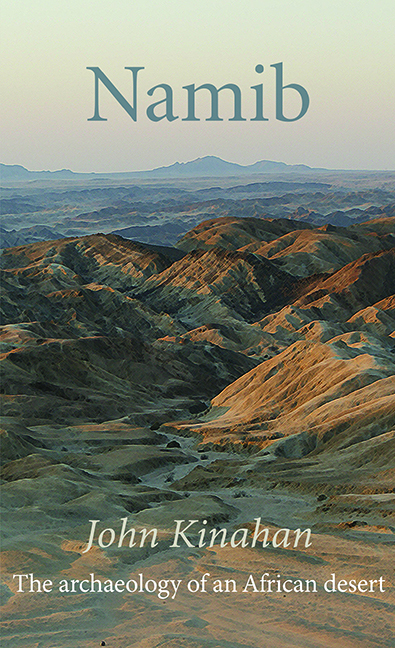Book contents
- Frontmatter
- Contents
- Miscellaneous Frontmatter
- Map
- Dedication
- Preface
- Acknowledgements
- Notes to the Reader
- List of Abbreviations
- List of Figures and Tables
- 1 Introduction
- 2 First Footsteps
- 3 Time’s Arrow
- 4 Mountain Refuge
- 5 Elephants and Rain
- 6 Desert Garden
- 7 The Family Herd
- 8 The Black Swan
- 9 Men in Hats
- 10 The Death of Memory
- Epilogue
- Glossary
- Bibliography
- Index
- Frontmatter
- Contents
- Miscellaneous Frontmatter
- Map
- Dedication
- Preface
- Acknowledgements
- Notes to the Reader
- List of Abbreviations
- List of Figures and Tables
- 1 Introduction
- 2 First Footsteps
- 3 Time’s Arrow
- 4 Mountain Refuge
- 5 Elephants and Rain
- 6 Desert Garden
- 7 The Family Herd
- 8 The Black Swan
- 9 Men in Hats
- 10 The Death of Memory
- Epilogue
- Glossary
- Bibliography
- Index
Summary
“The desert could not be claimed or owned – it was a piece of cloth carried by winds, never held down by stones, and given a hundred shifting names…”
Michael Ondaatje, The English Patient
Seen through the eye of a satellite orbiting our planet, southern Africa has the light green tint of open savanna over most of its central and eastern extent. On the western side of the continent, as the gaze shifts towards the Atlantic coast, lies a pale landscape of dunes and gravel plains: the Namib Desert and the adjacent semi-arid interior. Here, modern humans and their ancestors adapted with increasing ingenuity to ecological opportunities and constraints that shifted back and forth over millennia in response to fluctuations in global climate. In a sense, the desert became a gigantic painted canvas of human history comprising many layers, more thickly applied in some parts than in others.
The landscape setting of the events and processes we examine in this book has changed remarkably little over the last one million years. In contrast to most of the more densely populated parts of the world, some altered beyond recognition, it might be said without too much exaggeration that in this region the Pleistocene environment is largely intact, at least for now. The diverse fauna, including large species such as elephant and giraffe and their progenitors, were with us throughout this time. If you look over this terrain today, the view is not very different from that which drew the eye of our most distant ancestors; there is the same heat, and the same desert wind, sometimes carrying the faintest rumour of rain.
Guillaume de L’isle, a late 17th century cartographer who made the first relatively accurate map of southern Africa, showed the interior filled with various kingdoms known to Europe at that time, including the fabled Mono-Emugi and Monomotapa, and the territory of the dreaded Jaga Casangi.But in the west, where there is little detail shown beyond the coastline of the Namib Desert, the area immediately south of the Kunene River bears the annotation: Nation sauvage que l’on dit n’avoir pas seulem l’usage de la parole . It is possible to imagine that these people were indeed silent, as they gazed on the intruders from a safe distance before melting into the barren hills of Kaoko with their flocks.
- Type
- Chapter
- Information
- NamibThe Archaeology of an African Desert, pp. 1 - 38Publisher: Boydell & BrewerPrint publication year: 2022



